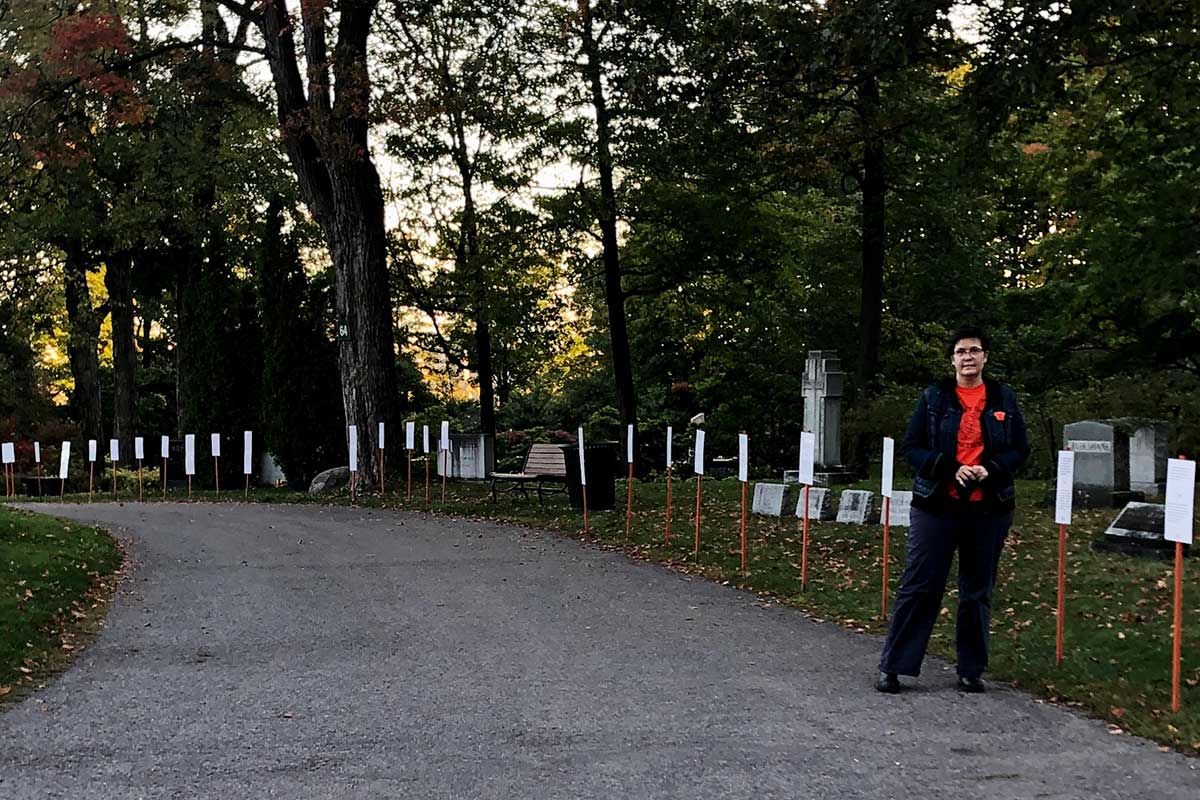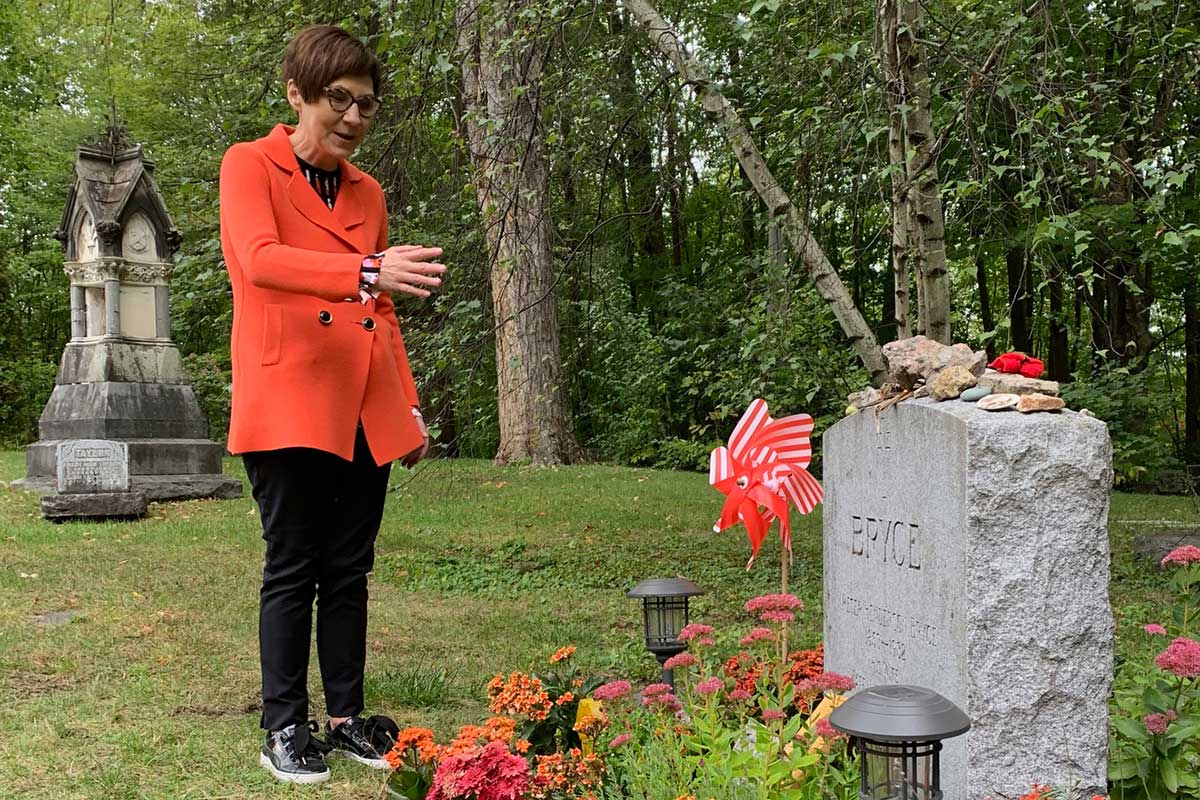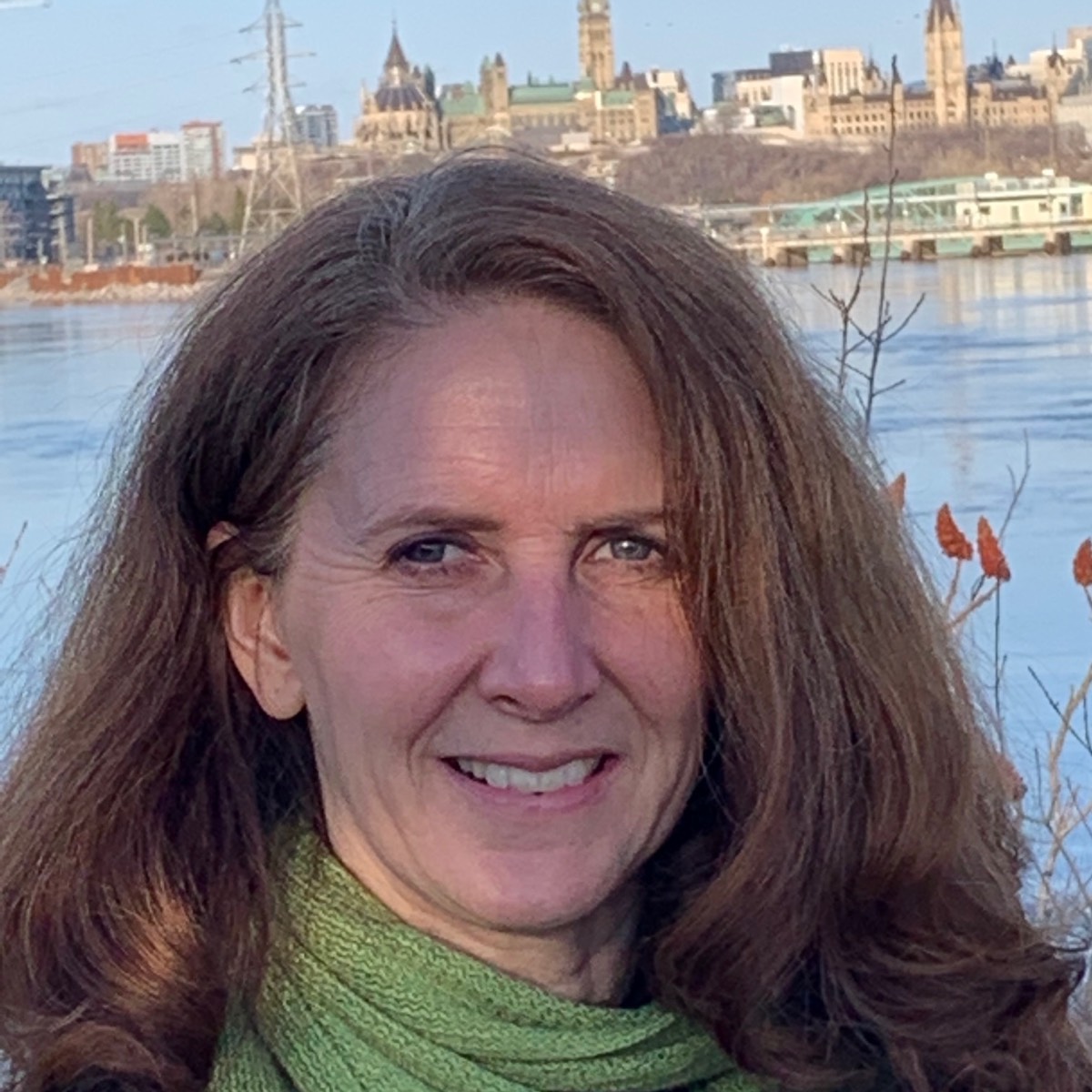In honour of the first National Day for Truth and Reconciliation on Sept. 30, the Beechwood Cemetery Foundation partnered with the Project of Heart, the Assembly of 7 Generations, and the First Nations Child and Family Caring Society to host a public Day of Reconciliation education and action. Local Anglicans came to the national cementery to listen, learn and reflect on Canada’s history with Indigenous people, particularly the impact of Indian Residential Schools.
Project of Heart
For the first National Day of Truth and Reconciliation, Beechwood did something it has never done before. It closed its sacred space for three days in order to host the creation of a memory labyrinth made with 57,000 Project of Heart tiles painted by school children across the country in memory of children who attended Indian Residential Schools. The tiles were arranged in the labyrinth pattern, which were linked with the names of Indian Residential Schools by members of the Assembly of 7 Generations youth. One evening was reserved for survivors of the schools and Elders, but on Sept. 30, members of the public were invited to walk the labyrinth and to reflect on the children who attended the schools, those who survived and those who did not.

Calls to Action
“A number of years ago, the Vestry of the Church of the Ascension committed itself to answering the 59th Call to Action through an ongoing process of learning “about our church’s role in colonization, the history and legacy of residential schools, and why apologies to former residential school students, their families, and communities were necessary.” With God’s help, we are learning but, on September 30th, as I listened to the stories of multigenerational survivors and walked along the path lined with the Calls to Action, I was struck by how much work is yet to be done to bring healing and justice to our church and to this land. With God’s help, may it be done.”
—The Rev. Rhonda Waters
Beechwood also asked Dr. Cindy Blackstock, executive director of the First Nations Child and Family Caring Society of Canada, to be a part of its events. At a press conference, she was asked about her thoughts as she walked among the tiles and read the names of the schools. “I would remember a survivor telling me what happened in that school,” she said. “In Shubenacadie, where children were abused, and babies were buried under the floorboards of the school and children would have to walk over it. In Cooper Island, there was profound sexual abuse. In Port Alberni Residential School and also in Edmonton School, where a lot of my family members would have been sent, where the abuse and malnourishment was profound. We need to remember that these were real children, and sometime that’s easy to forget.”
Kathryn Fournier, a member of the diocesan All My Relations Working Group and the granddaughter of residential school survivors herself, led a group of 11 non-Indigenous people from a hiking group she belongs to through the events at Beechwood. She said she and the people in her group found it “very moving to see the way that those children had painted those tiles and what they had put on those tiles.” She added that the sheer number of them, each representing an individual child, made it “a very powerful exhibit.”
Fournier said she was encouraged to see how well-attended the event was by both Indigenous and non-Indigenous participants. “There was a such wonderful mix of all sorts of people there, and I would say at least half of them were wearing orange t-shirts, so there was a real sense of community…all the people of this territory… For me, one of the single most moving and significant parts of being there was that Indigenous stories, experience, realities, and people were at the centre, the heart of the time.”
Reconciling History Tours
Beechwood holds a lot of Canadian history, as the final resting place of many prominent Canadians, such as Prime Minister Robert Borden and some key figures in the history of Indian Residential Schools. In the 1990s, Beechwood had begun erecting some plaques to offer visitors more information about people who played significant roles in Canadian history, but conversations with Blackstock convinced Beechwood that some revisions and additions were needed for a more balanced and critical view of some of that history. On Sept. 30, Beechwood offered Reconciling History Tours to the gravesites of those key figures. (There is also an online map and information so visitors can do a self-guided tour at any time.)
The plaque for Duncan Campbell Scott (1862 – 1947) now reads:
Scott is recognized as one of Canada’s Confederation Poets. His work, including several volumes of poetry and short stories, was inspired by the Canadian wilderness. He is also notorious for his 52-year career in the Department of Indian Affairs. As deputy superintendent, Scott oversaw the assimilationist Indian Residential School system for aboriginal children, stating his goal was “to get rid of the Indian problem.” In its 2015 report, Canada’s Truth and Reconciliation Commission said that the Indian Residential School system amounted to cultural genocide.
Blackstock also found a historical ally among those buried in Beechwood. Dr. Peter Henderson Bryce (1853 – 1932), was hired by the Indian Affairs Department to report on the health conditions of the Canadian residential school system in western Canada and British Columbia. The government never released his 1907 report, but Bryce published it in 1922 under the title The Story of a National Crime: Being a Record of the Health Conditions of the Indians of Canada from 1904 to 1921.
“I first read about Peter Bryce in John Milloy’s [1999] book A National Crime,” Blackstock explained. “I knew that there must have been people back then who knew better. Then the day before Prime Minister Harper’s apology I was on Google and realized [Bryce] was buried here, only a few kilometres away from where I live. So I came with a brightly coloured bouquet and I went to see him and thank him for what he did. I told him about our legal case [against the federal government for the inequitable provision of public services for Indigenous children] that was filed [in 2007] 100 years exactly from the time he did his report. I told him I’d be back when the kids won. Of course, the case is still going on, but the kids have won 26 out of 27 decisions, and I think we’ll win the other two this afternoon.” [Indeed, the Federal Court upheld a Canadian Human Rights Tribunal order requiring Ottawa to compensate thousands of Indigenous children who experienced discrimination by the state.]
That was the start of what could be called a beautiful friendship. Blackstock began tending to Dr. Bryce’s grave site, planting flowers and worked with Beechwood to erect a plaque about his work. “Beechwood has been amazing and is an exemplar about embracing their responsibility in reconciliation,” she said. Dr. Bryce’s grave is now one of the most visited sites in Beechwood.
Blackstock, whose graveside work now aided by Sylvia Smith of Project of Heart, pointed out that a small orange mailbox has been added to the site. “People were coming to learn this story and they were leaving letters for Dr. Bryce …, and I would find these letters, often soaking wet, and I would take them home and dry them, …so the orange mail box was placed there on Dr. Bryce’s birthday.”
Blackstock said the people buried in Beechwood cemetery offer valuable lessons for the present.
“One of them, and I think it is very important, is that people of the period always knew that these kids were dying,…and were being hurt. They spoke up. It wasn’t considered to be okay back then, but the government chose not to listen. And when the headlines died, the children died. That’s why it is so important when we see murdered and missing Indigenous women and girls or we see the unfuifilled Truth and Reconciliation Report, that we don’t repeat that pattern. We can’t look away until justice is done.”







Listening for God’s voice in a time of change